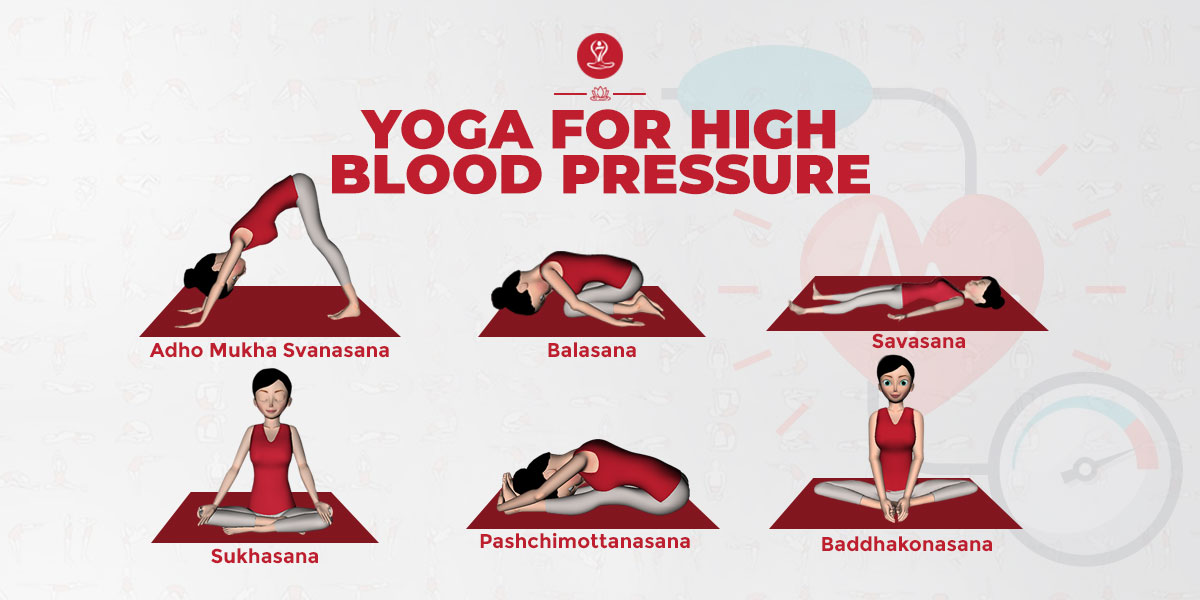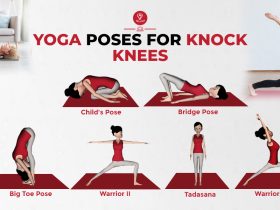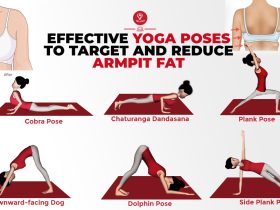
High blood pressure, or hypertension, can stem from a variety of factors, including lifestyle choices such as lack of exercise, poor diet, obesity, smoking, and stress. These factors, exacerbated by the demands of modern life, contribute significantly to the prevalence of hypertension.
Addressing high blood pressure often requires a comprehensive approach that combines modern medicine with lifestyle modifications. integrating exercise, yoga, and a healthy diet into one’s lifestyle can be incredibly beneficial for managing high blood pressure. Regular physical activity not only helps in maintaining a healthy weight but also strengthens the heart, improves circulation, and reduces stress—all of which contribute to lowering blood pressure.
Yoga, with its focus on breathing techniques, relaxation, and gentle movements, can be particularly effective in reducing stress and promoting relaxation, both of which are important for managing blood pressure. Practices like meditation and deep breathing can help calm the nervous system and lower blood pressure over time.
Of course, High blood pressure often requires a multifaceted approach for effective management, and lifestyle modifications can play a significant role in that.
Yoga For High Blood Pressure
It’s important for individuals with hypertension to approach yoga practice mindfully and cautiously, as certain poses may not be suitable for them. Poses that involve intense inversions, such as headstands or shoulder stands, may increase blood pressure temporarily and should generally be avoided by those with hypertension.
Additionally, individuals with high blood pressure should be mindful of their breathing during yoga practice, avoiding breath retention and opting instead for smooth, steady breathing patterns. Certain breathing techniques, like Kapalabhati (rapid breathing) and Bhastrika (bellows breath), may also elevate blood pressure and should be practiced with caution.
Before starting any new exercise or yoga routine, especially for those with hypertension, it’s essential to consult with a your doctor or a yoga instructor who can provide guidance to individual needs and limitations.
Yoga Poses To Reduce Hypertension
1. Sukhasana (Easy Pose)
Sukhasana, also known as the Easy Pose, is a simple and accessible yoga asana that offers numerous benefits, including improved circulation and reduced fatigue.
The pose involves sitting cross-legged with a straight spine and relaxed shoulders, making it suitable for practitioners of all levels. By sitting in this posture, blood circulation can improve throughout the body, particularly in the lower extremities. This can help alleviate feelings of fatigue and promote overall well-being.
- For the practice of Sukhasana, spread the mat on a flat place and sit by cross leg position.
- While doing this asana, the mind should be kept calm and relaxed.
- Now keep your body absolutely straight while keeping your waist straight.
- After this, open the fingers of both your hands and keep them on your knees.
- Now while doing pranayama, sit for as long as you can in this posture.
2. Bound Angle Pose (Baddhakonasana)
Baddhakonasana is known to improve blood flow throughout the body, particularly in the pelvic region. By promoting better circulation, it can support heart function and contribute to lowering blood pressure over time.
Additionally, Baddhakonasana provides a deep stretch for the muscles of the knees, waist, and inner thighs. Regular practice of this asana can help improve flexibility and mobility in these areas, reducing tension and discomfort.
- To practice this asana, first, you bend your knees and sit in such a way that the soles of your two legs are joined together.
- Now join the fingers of both hands together and hold the toes with it.
- During this time, your waist should be very straight.
- Now while inhaling, do it above the feet and while exhaling.
- Keep doing the process of lowering these legs up and down.
3. Balasana (Child Pose)
Balasana, also known as Child’s Pose, is a gentle and restorative yoga pose that offers a variety of benefits, including stretching the hips, thighs, and ankles.
This pose is often used as a resting pose during yoga practice, allowing practitioners to take a moment to connect with their breath and relax the body and mind. The calming effect of this pose can help reduce stress and anxiety, promoting a sense of peace and well-being.
- Sit on your heels or in Vajrasana.
- Keeping your buttocks on the heels, bend forward and attach the forehead to the ground.
- Place your arms on the ground with the body and keep the palms facing the sky (if there is difficulty in doing so, place one palm over the other and place your forehead on them).
- Gently press the chest towards the thigh.
- Stopped for a while.
- Taking care of the spinal cord, slowly get up and sit on your heels and relax.
4. Pashchimottanasana (Seated Forward Bend)
Pashchimottanasana provides gentle strengthening of your back, hamstrings, and abdominal. It helps reduce high blood pressure as increases blood flow to the lower abdomen.
This pose has a calming effect on the nervous system, promoting relaxation and stress relief. The forward fold also encourages deep breathing, which can help lower blood pressure by inducing a relaxation response and increasing blood flow to the abdominal region.
- For this, lay a mat on flat land.
- Now sit on the mat in Dandasana posture.
- In this posture, the leg stays forward.
- While the body and spine remain in a straight line and the hand remains on the ground.
- After this, pull the back of your body forward and try to stick on the feet.
5. Adho Mukha Svanasana (Downward-Facing Dog pose)
The inversion in Downward Dog also encourages blood flow towards the head and upper body, which can help alleviate symptoms of high blood pressure by reducing stress and promoting relaxation.
- Sit on the floor by spreading your hands on the floor and bend your knees.
- Your knees should be below your hips and your hands should be under your shoulders.
- Spread your fingers, your weight should be evenly on them and your entire palm.
- Raise yourself on your knees until your legs are straight.
- If you can, move your heel slowly towards the floor while keeping your palms and fingers flat on the floor.
- Spread your legs equal to the hip distance and keep your head between your upper arms.
- In this pose, your body will become the reverse “V” of English, in which your bent hips will be like a small mountain and your arms and legs will be spread on both sides.
- Stop and breathe in this pose. Stop 5 to 10 breaths, then release.
6. Savasana (Corpse Pose)
This relaxation pose can have a profound effect on reducing stress levels, which in turn can help lower blood pressure. Chronic stress is known to contribute to hypertension, so practices like Shavasana that promote relaxation and stress relief can be beneficial for managing high blood pressure.
- Lie on your back and make the distance as far as possible between the two legs.
- Keep the foot paws on the outside and the eddy on the inside.
- Straighten both hands. Fold the fingers and keep the neck straight.
- Close the eyes and leave the part of the toe from head to loose.
- Now focus on your breathing process.
- Feel the breath coming in and out of both nostrils.
- After some time, focus on the chest and navel. Remove all thoughts from the mind and focus your attention only on the body.
Conclusion
While yoga can offer numerous physical and mental benefits, it’s essential to recognize that it should not be seen as a substitute for medical treatment, especially in the case of conditions like high blood pressure.
Individuals with high blood pressure or any other medical condition should always consult their healthcare provider before starting a new yoga practice or making significant lifestyle changes. Your doctor can provide personalized advice based on your medical history, current health status, and individual needs.
RELATED ARTICLES
May 20, 2025
Kegel Exercises: Strengthen Your Pelvic Floor for Better Health
Kegel exercises strengthen the pelvic floor muscles, which support the uterus, bladder, small intestine and rectum. Strengthening these muscles improves[...]
Oct 06, 2024
Balance Your Body: Yoga Poses For Knock Knees (Genu Valgum)
Knock knees, or “genu valgum,” is a condition in which the knees touch each other while the ankles remain apart.[...]
Sep 20, 2024
Effective Yoga Poses to Target and Reduce Armpit Fat
Fat accumulation under the arms is a common problem for many women, which is often considered an important part of[...]
RECENT POSTS
Disclaimer
The content is purely informative and educational in nature and should not be construed as medical advice. Please use the content only in consultation with an appropriate certified medical or healthcare professional







